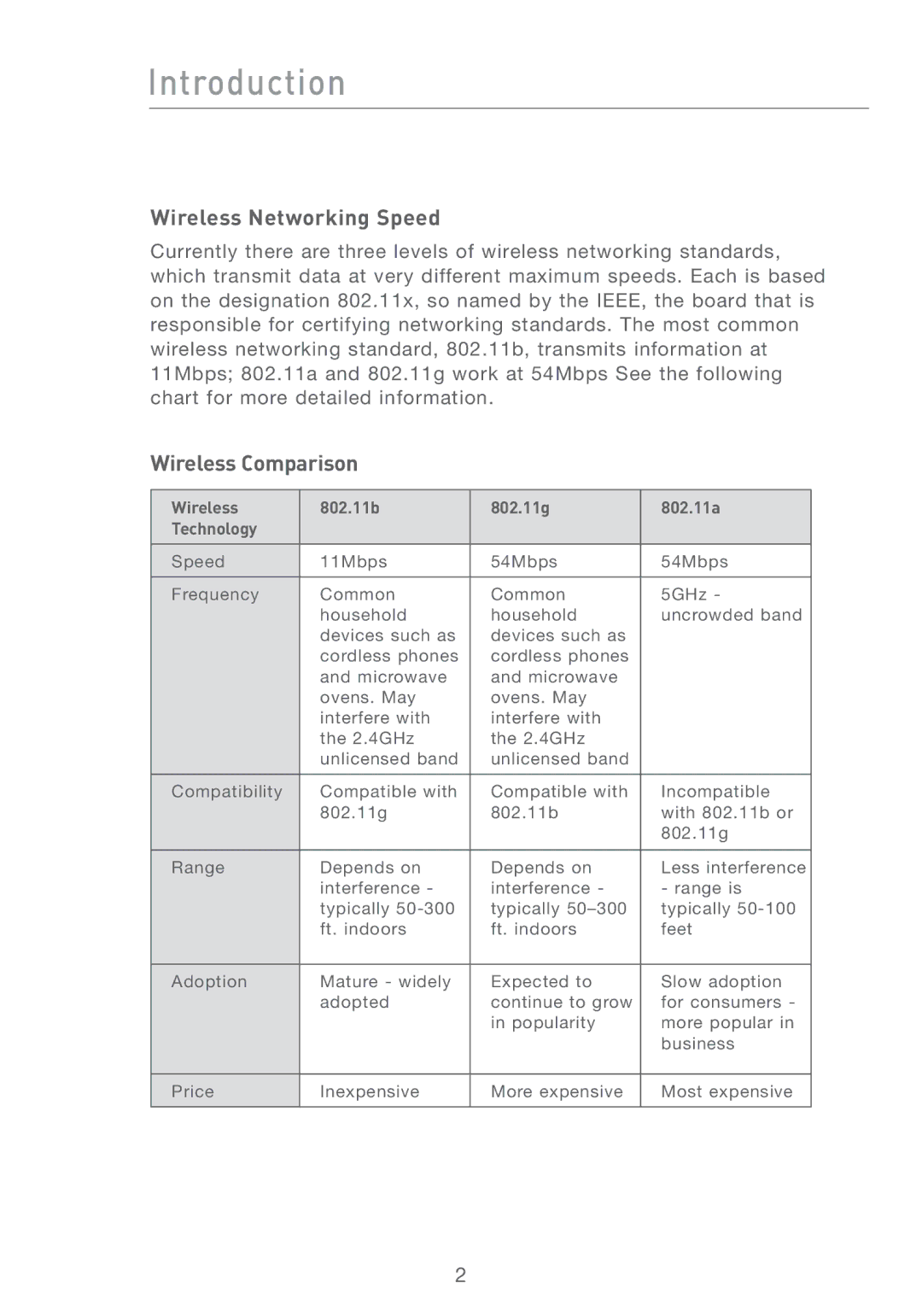
Introduction
Wireless Networking Speed
Currently there are three levels of wireless networking standards, which transmit data at very different maximum speeds. Each is based on the designation 802.11x, so named by the IEEE, the board that is responsible for certifying networking standards. The most common wireless networking standard, 802.11b, transmits information at 11Mbps; 802.11a and 802.11g work at 54Mbps See the following chart for more detailed information.
Wireless Comparison
Wireless | 802.11b | 802.11g | 802.11a |
Technology |
|
|
|
|
|
|
|
Speed | 11Mbps | 54Mbps | 54Mbps |
|
|
|
|
Frequency | Common | Common | 5GHz - |
| household | household | uncrowded band |
| devices such as | devices such as |
|
| cordless phones | cordless phones |
|
| and microwave | and microwave |
|
| ovens. May | ovens. May |
|
| interfere with | interfere with |
|
| the 2.4GHz | the 2.4GHz |
|
| unlicensed band | unlicensed band |
|
|
|
|
|
Compatibility | Compatible with | Compatible with | Incompatible |
| 802.11g | 802.11b | with 802.11b or |
|
|
| 802.11g |
|
|
|
|
Range | Depends on | Depends on | Less interference |
| interference - | interference - | - range is |
| typically | typically | typically |
| ft. indoors | ft. indoors | feet |
|
|
|
|
Adoption | Mature - widely | Expected to | Slow adoption |
| adopted | continue to grow | for consumers - |
|
| in popularity | more popular in |
|
|
| business |
|
|
|
|
Price | Inexpensive | More expensive | Most expensive |
|
|
|
|
2
